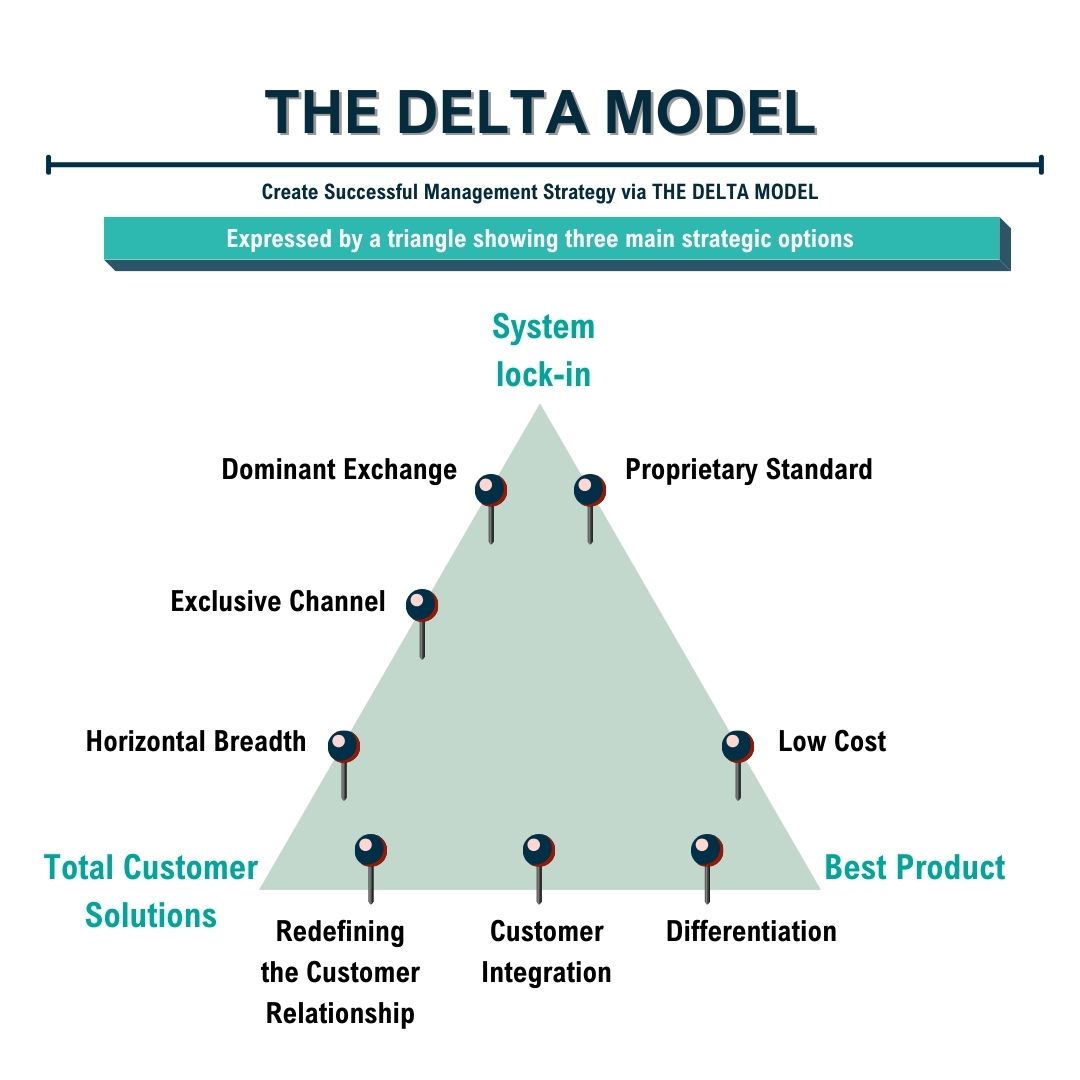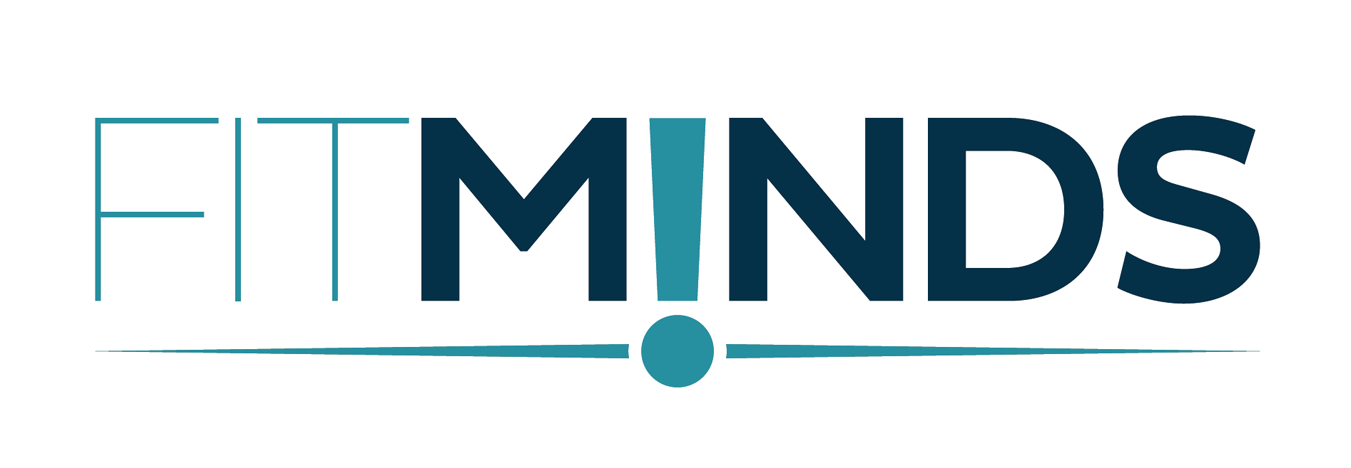The Delta Model is a strategic management framework designed to create a strong connection between a company and its customers and complementors. Arnoldo Hax and Dean Wilde introduced the Model in the 1990s.
Main Benefits of The DELTA Model
The DELTA Model emphasizes the importance of understanding and meeting customer needs and building relationships with complementors (other products and services in the same business ecosystem) to achieve sustainable profitability.
The DELTA Model helps you:
- to better understand and address the factors driving customer satisfaction and loyalty,
- to adapt to evolving market dynamics,
- to enhance competitiveness for market leadership,
- to formulate and implement effective corporate and business strategies.
Explanation of The DELTA Model
The Delta Model, an integrated strategy formulation process, is expressed by a triangle showing three main strategic options: system lock-in, total customer solutions, and best product.
This triad allows companies to create a competitive advantage by moving beyond a product-centric vision.
System lock-in, at the apex of the triangle, focuses on achieving market dominance by creating a strong connection within the entire business system, ensuring sustainability. Those who have achieved this position have achieved both market dominance and competitive lock-in.
Total Customer Solutions (TCS), on the left side of the triangle, emphasizes cooperation to achieve customer share by providing superior solutions that meet customer needs.
Best Product Positioning, on the right side of the triangle, focuses on effective and efficient product creation. It aims to gain a competitive edge and increase market share by offering the best product.

In addition to the three main strategic options, the Delta Model has eight strategic positions.
Dominant Exchange: A strategy aiming for a company’s dominant position in a market and superior customer relations through expanding its customer base and achieving a strong competitive position.
Exclusive Channel: Directing the distribution of a specific product or service through a limited channel to enhance its value and establish a competitive advantage.
Horizontal Breadth: Involves a company expanding into different product or service categories within the same industry to diversify its customer base and reach various market segments.
Redefining The Customer Relationship: Involves reshaping customer interactions beyond conventional norms, with companies aiming to improve customer loyalty by enhancing the overall customer experience.
Customer Integration: A strategy that seeks to incorporate customers into business processes and product development, fostering collaboration based on customer feedback.
Differentiation: Emphasizes highlighting unique features of a company’s products or services to stand out from competitors and create a distinctive value proposition in the market.
Low Cost: A strategy focused on offering products or services at reduced expenses, aiming to gain a competitive edge in pricing through cost efficiency.
Proprietary Standard: Involves using unique standards in a company’s products or services that distinguish them from others, aiming to provide exclusive advantages to customers and encourage brand preference.
How to Apply The DELTA Model
To apply The DELTA Model to your business, FITMINDS is providing an adoption of the model that fits your company and your company’s needs. By using The DELTA Model, organizations can build sustainable competitive advantages.
Contact us to get more information or discover your probable personalized roadmap for The DELTA Model.
Additional Tips and Readings
- For a management method used to align an organization’s goals and objectives, you can read The Hoshin Planning.
- You can learn more about organizational strategy models with the Miles and Snow Organizational Strategy Model.
- To read more about business strategy, you can check Pyramid of Purpose Model.
- For a step-by-step strategic planning tool, you can read Lafley and Martin’s Five-Step Strategy Model
Contact us to formulate and implement effective business strategies via The DELTA Model.



13 comments
Pingback: cheap androxal uk buy online
Pingback: buy cheap enclomiphene canada purchase
Pingback: rifaximin quick delivery
Pingback: generic xifaxan in pharmacy
Pingback: buy staxyn canada
Pingback: cheap avodart generic online cheapest
Pingback: prix de kamagra 100 mg numéro 30
Pingback: buying dutasteride buy mastercard
Pingback: cheap flexeril cyclobenzaprine without prescription
Pingback: purchase fildena no prescription online
Pingback: gabapentin singapore buy
Pingback: ordering itraconazole purchase discount
Pingback: koupit kamagra přes noc dodání
Comments are closed.